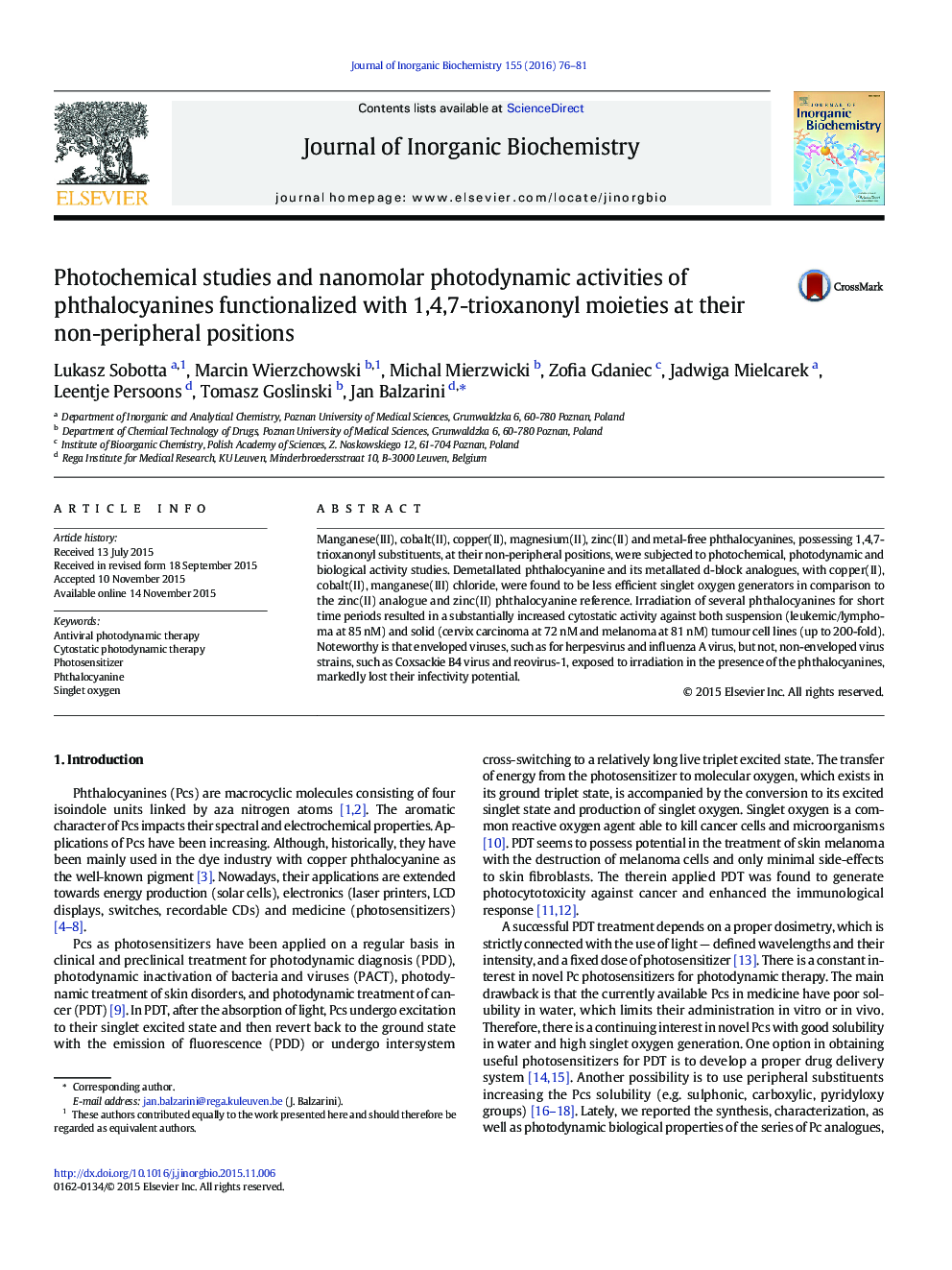| Article ID | Journal | Published Year | Pages | File Type |
|---|---|---|---|---|
| 1316977 | Journal of Inorganic Biochemistry | 2016 | 6 Pages |
•Synthesis of phthalocyanine derivatives with 1,4,7-trioxanonyl moieties•Determination of singlet oxygen generation yields and photostability•Photocytotoxicity against cancer cells after illumination•Photodynamic antimicrobial activity against enveloped viruses
Manganese(III), cobalt(II), copper(II), magnesium(II), zinc(II) and metal-free phthalocyanines, possessing 1,4,7-trioxanonyl substituents, at their non-peripheral positions, were subjected to photochemical, photodynamic and biological activity studies. Demetallated phthalocyanine and its metallated d-block analogues, with copper(II), cobalt(II), manganese(III) chloride, were found to be less efficient singlet oxygen generators in comparison to the zinc(II) analogue and zinc(II) phthalocyanine reference. Irradiation of several phthalocyanines for short time periods resulted in a substantially increased cytostatic activity against both suspension (leukemic/lymphoma at 85 nM) and solid (cervix carcinoma at 72 nM and melanoma at 81 nM) tumour cell lines (up to 200-fold). Noteworthy is that enveloped viruses, such as for herpesvirus and influenza A virus, but not, non-enveloped virus strains, such as Coxsackie B4 virus and reovirus-1, exposed to irradiation in the presence of the phthalocyanines, markedly lost their infectivity potential.
Graphical abstractPhotochemical, photodynamic and biological activity studies revealed that zinc (II) phthalocyanines possessing 1,4,7-trioxanonyl substituents at their non-peripheral positions were more efficient singlet oxygen generators than other metal-containing derivatives. Irradiation resulted in increased cytostatic activity and preferred inhibition of enveloped viruses in cell culture.Figure optionsDownload full-size imageDownload as PowerPoint slide
